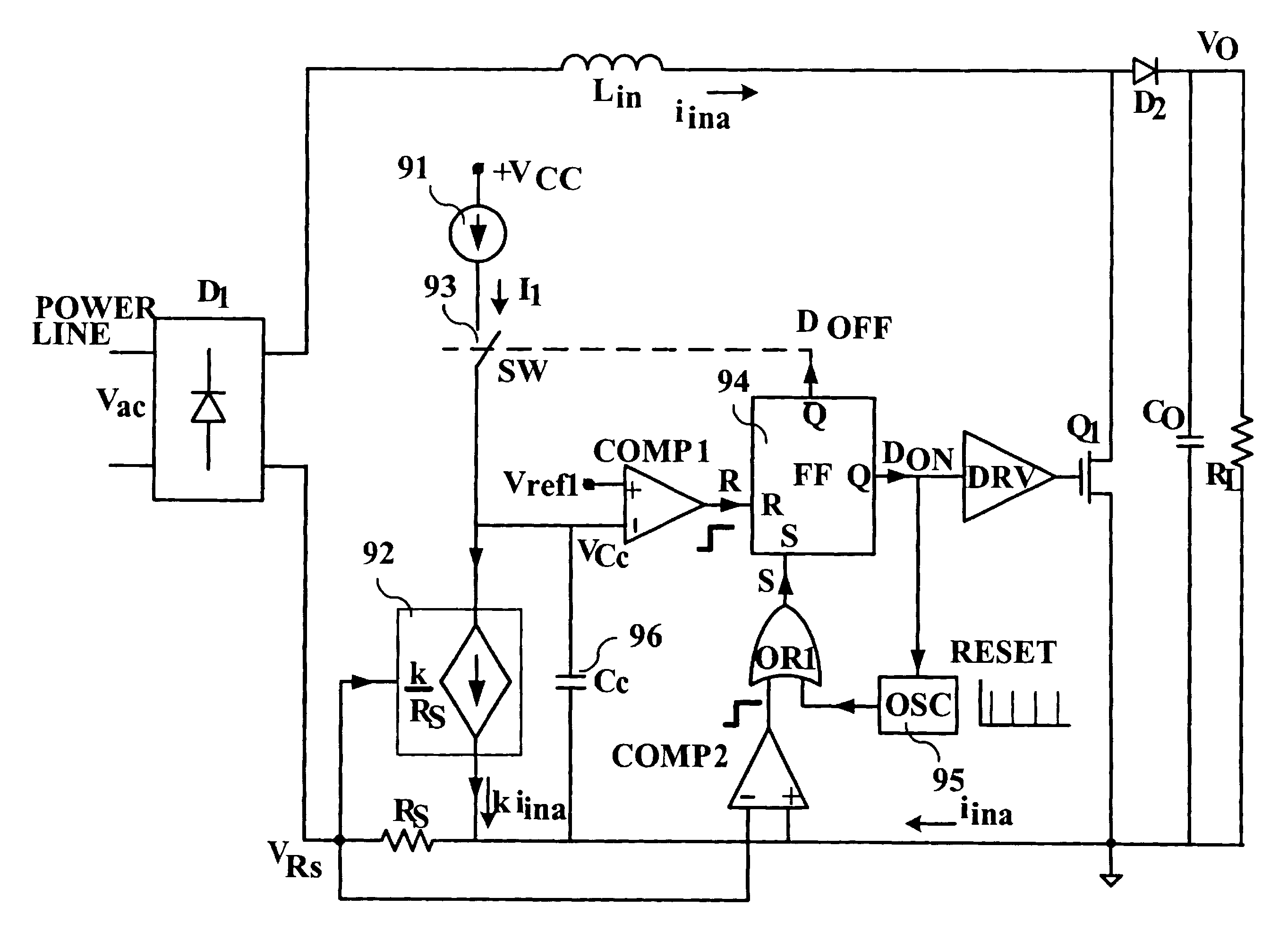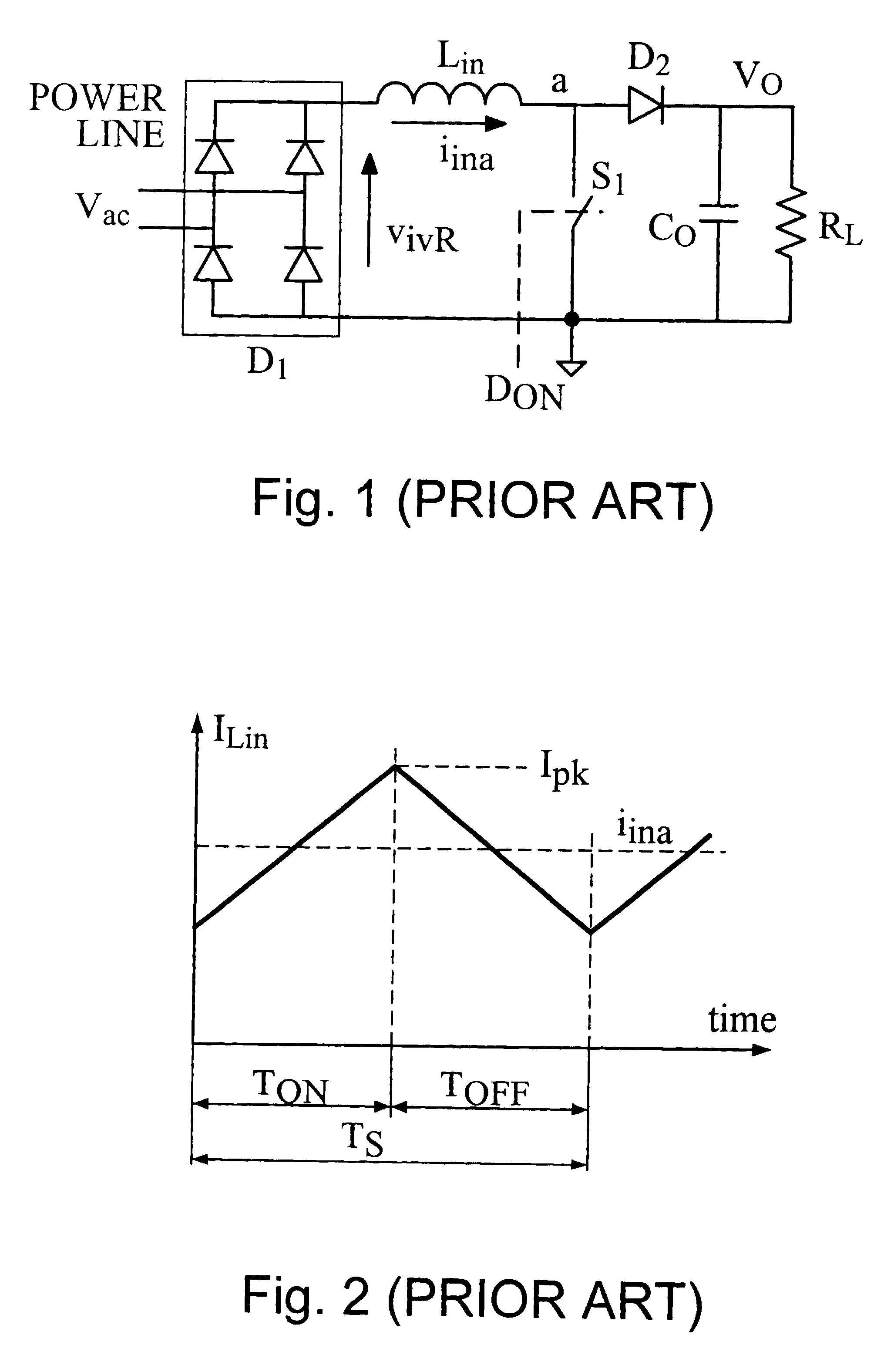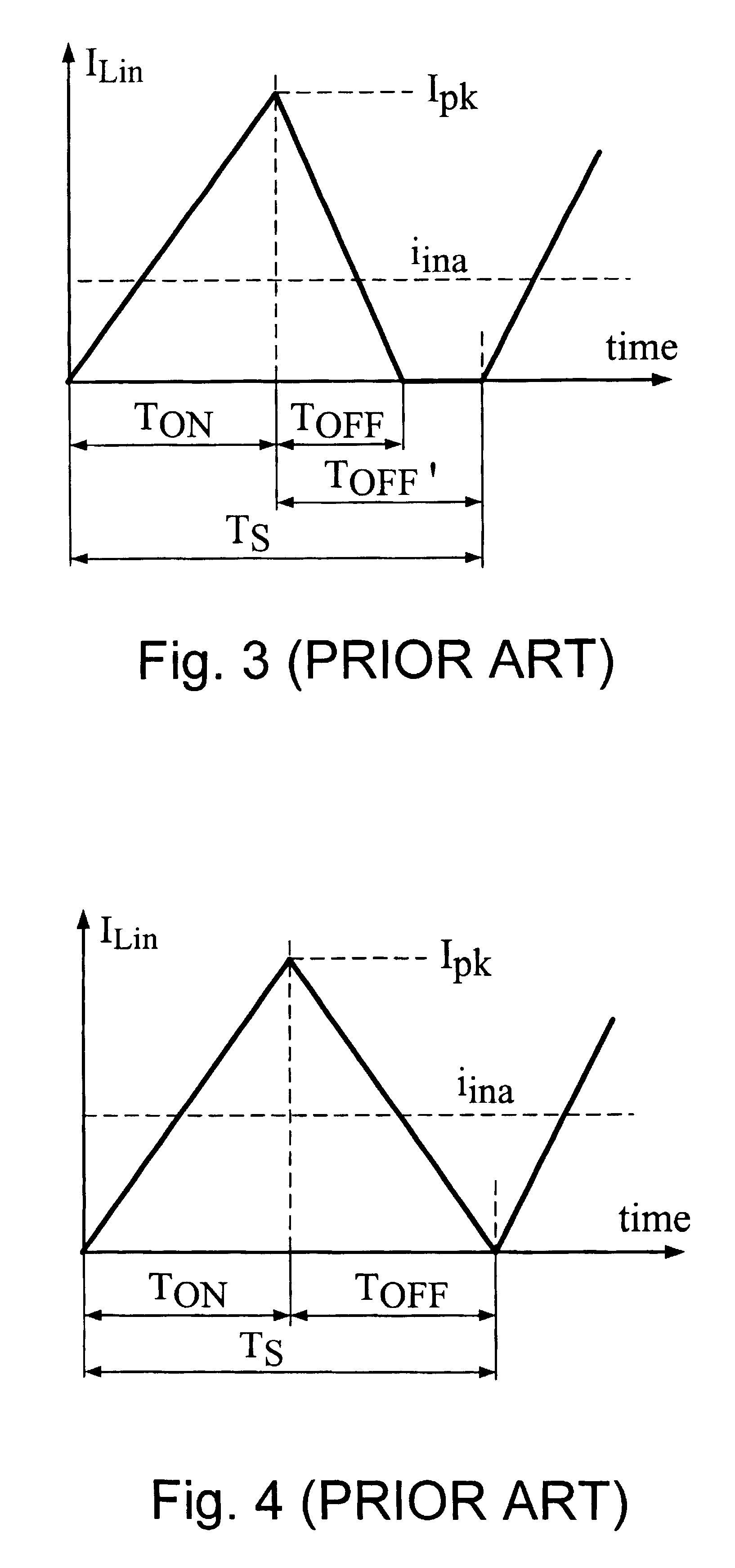PFC apparatus for a converter operating in the borderline conduction mode
a technology of conduction mode and converter, which is applied in the direction of electric variable regulation, process and machine control, instruments, etc., can solve the problems of low power transmission efficiency, possible interference with other units connected to the power line, and distortion of the line voltage shap
- Summary
- Abstract
- Description
- Claims
- Application Information
AI Technical Summary
Benefits of technology
Problems solved by technology
Method used
Image
Examples
Embodiment Construction
In one aspect, the present invention relates to a method for realizing an APFC converter that forces the system to remain in the Borderline Conduction Mode (BCM) without sampling the voltage at the input of the converter. With a small adaptation, the novel control methods can also be utilized for APFC operating in CCM mode.
Two current sources are utilized for charging a capacitor for a first duration being equal to "T.sub.OFF ", and for discharging the same capacitor for a second duration being equal to "T.sub.ON ". The capacitor may be either in a state of `charging` or in a state of `discharging`. For current sources having constant magnitudes, "T.sub.OFF " depends only on the time it takes the inductor current to reach zero. On the other hand, the longer the duration "T.sub.OFF " is, the higher the voltage level of the capacitor, resulting in longer "T.sub.ON ", since it takes the capacitor more time to discharge. Consequently, different loads have different "T.sub.ON " and "T.su...
PUM
 Login to View More
Login to View More Abstract
Description
Claims
Application Information
 Login to View More
Login to View More - R&D
- Intellectual Property
- Life Sciences
- Materials
- Tech Scout
- Unparalleled Data Quality
- Higher Quality Content
- 60% Fewer Hallucinations
Browse by: Latest US Patents, China's latest patents, Technical Efficacy Thesaurus, Application Domain, Technology Topic, Popular Technical Reports.
© 2025 PatSnap. All rights reserved.Legal|Privacy policy|Modern Slavery Act Transparency Statement|Sitemap|About US| Contact US: help@patsnap.com



